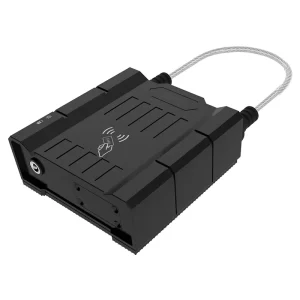In recent years, the Internet of Things (IoT) has permeated various aspects of our daily lives, revolutionizing how we interact with the world around us. One of the most promising applications of IoT is in the realm of transportation, where it has given rise to the concept of the Internet of Vehicles (IoV). IoV represents a paradigm shift in the automotive industry, integrating vehicles with the internet and creating a networked ecosystem that offers numerous benefits in terms of safety, efficiency, and convenience.
Understanding IoV Technology
At its core, IoV technology leverages connectivity, data exchange, and intelligent algorithms to enable vehicles to communicate with each other, with infrastructure, and with external systems. This communication is facilitated through a combination of wireless communication protocols, such as Wi-Fi, Bluetooth, and cellular networks, along with advanced sensors, GPS systems, and onboard computing capabilities.

Key Components of IoV
- Onboard Sensors: Vehicles are equipped with an array of sensors, including cameras, radar, LiDAR, and ultrasonic sensors, which provide real-time data on the vehicle’s surroundings, road conditions, and other relevant information.
- Communication Modules: IoV-enabled vehicles are equipped with communication modules that enable wireless connectivity to other vehicles, roadside infrastructure, and cloud-based services.
- Centralized Control Systems: Centralized control systems, often hosted in the cloud, process and analyze the data received from vehicles, enabling intelligent decision-making and coordination.
- Intelligent Algorithms: Advanced algorithms, such as machine learning and artificial intelligence, are employed to extract insights from the vast amounts of data generated by IoV systems, enabling predictive maintenance, traffic optimization, and autonomous driving capabilities.
Applications of IoV Technology
The integration of vehicles into the internet opens up a wide range of applications and use cases across various domains:
- Enhanced Safety: IoV technology enables real-time collision avoidance systems, blind-spot detection, and cooperative adaptive cruise control, improving overall road safety.
- Traffic Management: By sharing real-time traffic and road condition data, IoV systems facilitate dynamic route planning, congestion management, and traffic signal optimization, reducing travel times and fuel consumption.
- Fleet Management: Fleet operators can utilize IoV technology to monitor vehicle performance, optimize routes, and schedule maintenance proactively, leading to cost savings and improved operational efficiency.
- Smart Parking: IoV-enabled vehicles can communicate with parking infrastructure to find available parking spaces, reserve parking spots in advance, and make payments seamlessly, reducing congestion and enhancing the parking experience.
- Infotainment and Connectivity: IoV systems provide passengers with access to a wide range of entertainment, information, and communication services, transforming the in-vehicle experience.
Challenges and Considerations
Despite its immense potential, the widespread adoption of IoV technology faces several challenges and considerations:
- Security and Privacy: The increased connectivity of vehicles raises concerns about cybersecurity threats and unauthorized access to sensitive data, necessitating robust security measures and privacy safeguards.
- Interoperability: Ensuring interoperability and compatibility between different IoV systems and protocols is essential to enable seamless communication and collaboration across diverse vehicles and infrastructure.
- Regulatory and Legal Frameworks: The development and deployment of IoV technology require clear regulatory frameworks and standards to address liability, safety, and compliance issues.
- Infrastructure Readiness: The effectiveness of IoV systems depends on the availability of adequate infrastructure, including high-speed internet connectivity, roadside sensors, and intelligent transportation systems.
In conclusion, the Internet of Vehicles (IoV) technology represents a transformative paradigm shift in the automotive industry, revolutionizing how vehicles interact with each other and with the surrounding environment. With its potential to enhance safety, efficiency, and convenience, IoV technology holds the promise of shaping the future of transportation in profound ways. However, realizing this vision will require addressing various challenges and considerations while embracing ongoing innovation and collaboration across industry stakeholders. As we embark on this journey towards a connected and intelligent transportation ecosystem, the possibilities offered by IoV technology are boundless, heralding a new era of mobility and connectivity.

